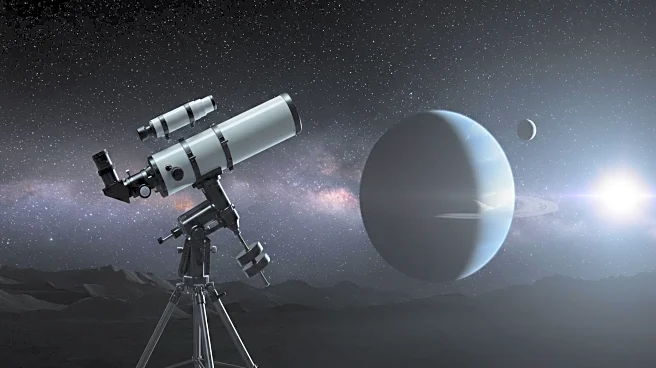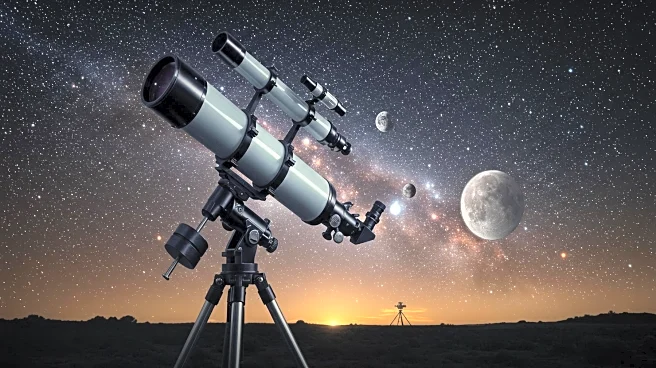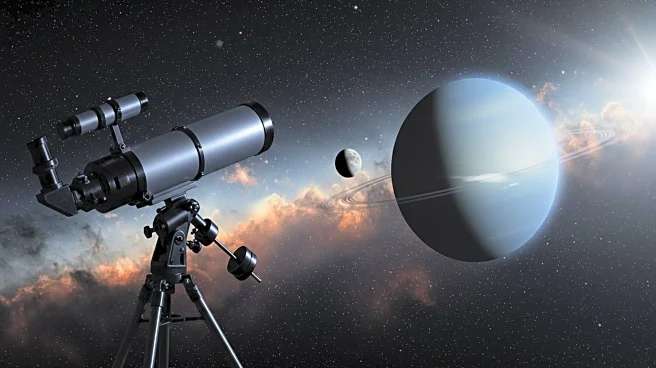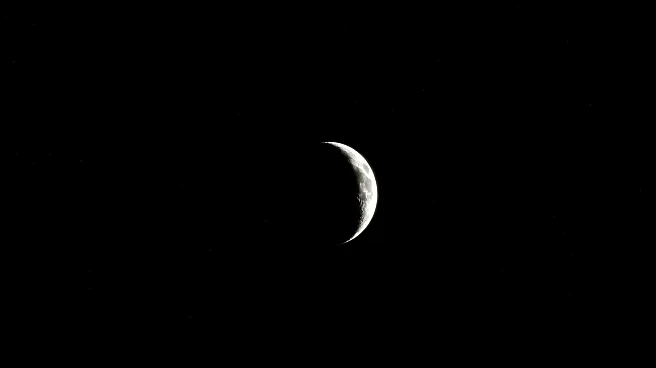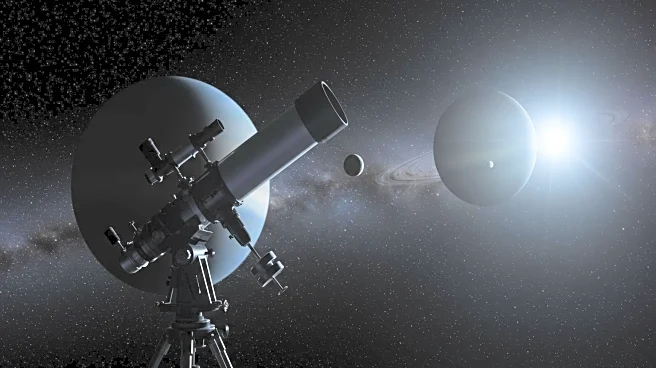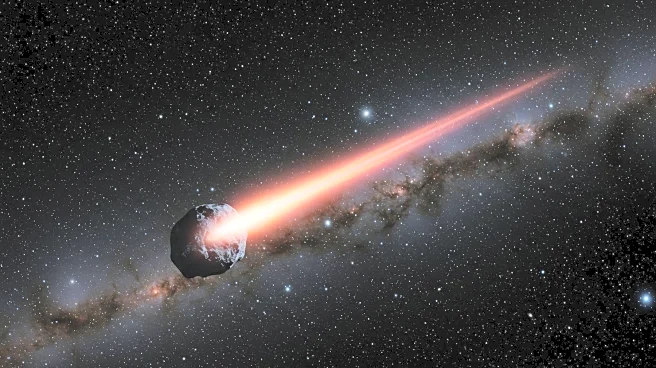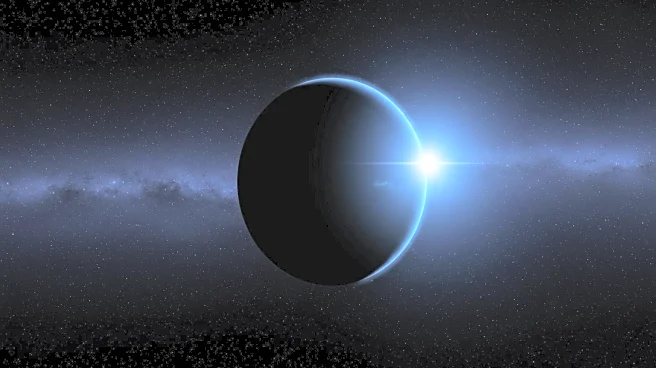What's Happening?
The James Webb Space Telescope has identified a new moon orbiting Uranus, increasing the planet's known satellite count to 29. This discovery was made by a team led by Maryame El Moutamid at the Southwest Research Institute in Colorado, using infrared images captured by the telescope. The moon, provisionally named S/2025 U 1, is small and dim, making it challenging to detect. The naming convention for Uranus's moons typically involves characters from Shakespeare's works, and discussions are underway to select an appropriate name. The discovery suggests there may be more moons yet to be found around Uranus, particularly within its ring system.
Why It's Important?
The discovery of a new moon around Uranus is significant as it enhances our understanding of the planet's satellite system and the dynamics within its rings. This finding could lead to further exploration and discoveries, potentially revealing more about the formation and evolution of Uranus's moons. The James Webb Space Telescope's ability to detect such faint objects demonstrates its advanced capabilities, which could be pivotal in future astronomical research. The potential identification of additional moons could provide insights into the gravitational interactions and stability of Uranus's ring system.
What's Next?
The naming of the new moon will require approval from the International Astronomical Union. Further observations and studies are likely to be conducted to explore the possibility of additional moons around Uranus. The proposed Uranus Orbiter and Probe mission, planned for 2044, could significantly advance our understanding of the planet's satellite system. Continued use of the James Webb Space Telescope may lead to more discoveries, enhancing our knowledge of the outer solar system.


